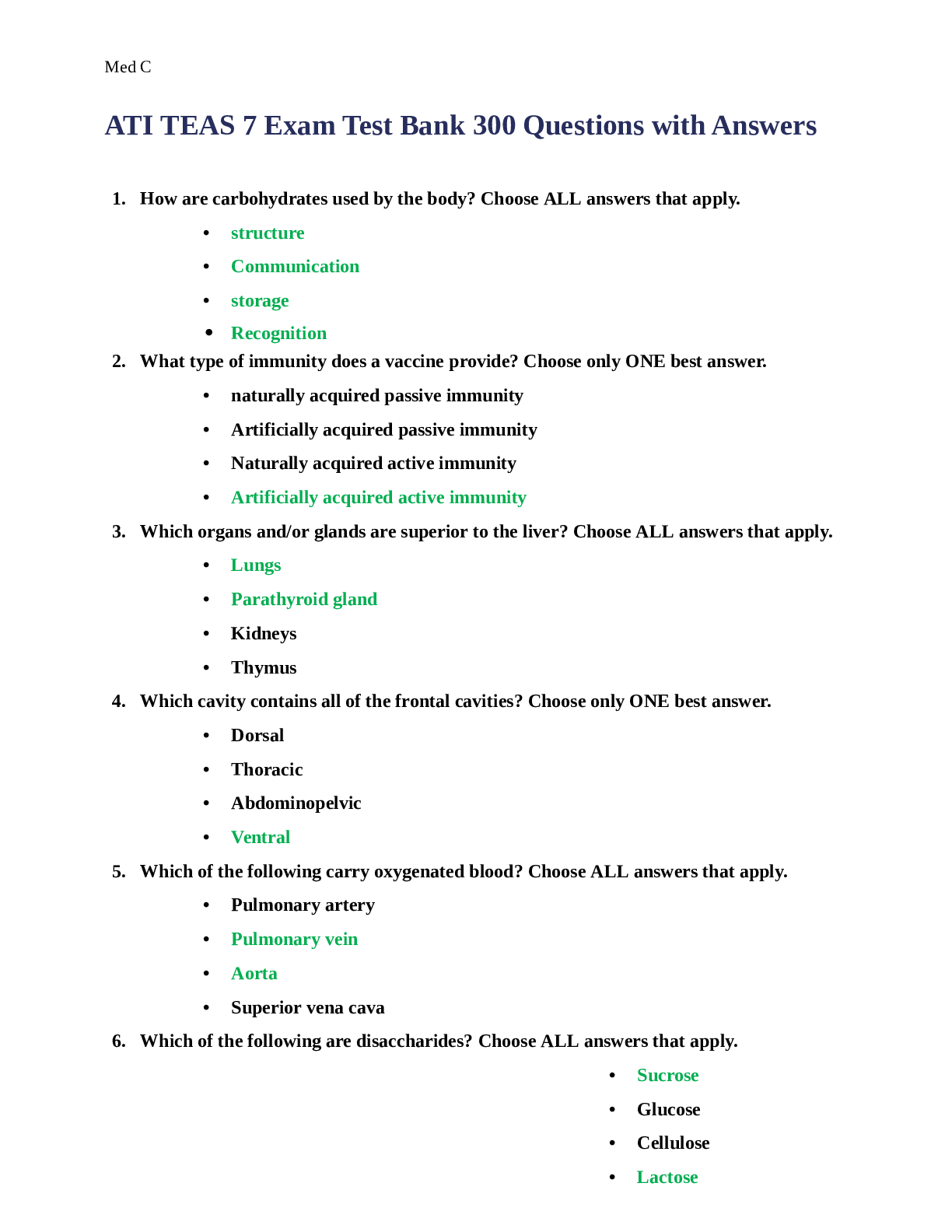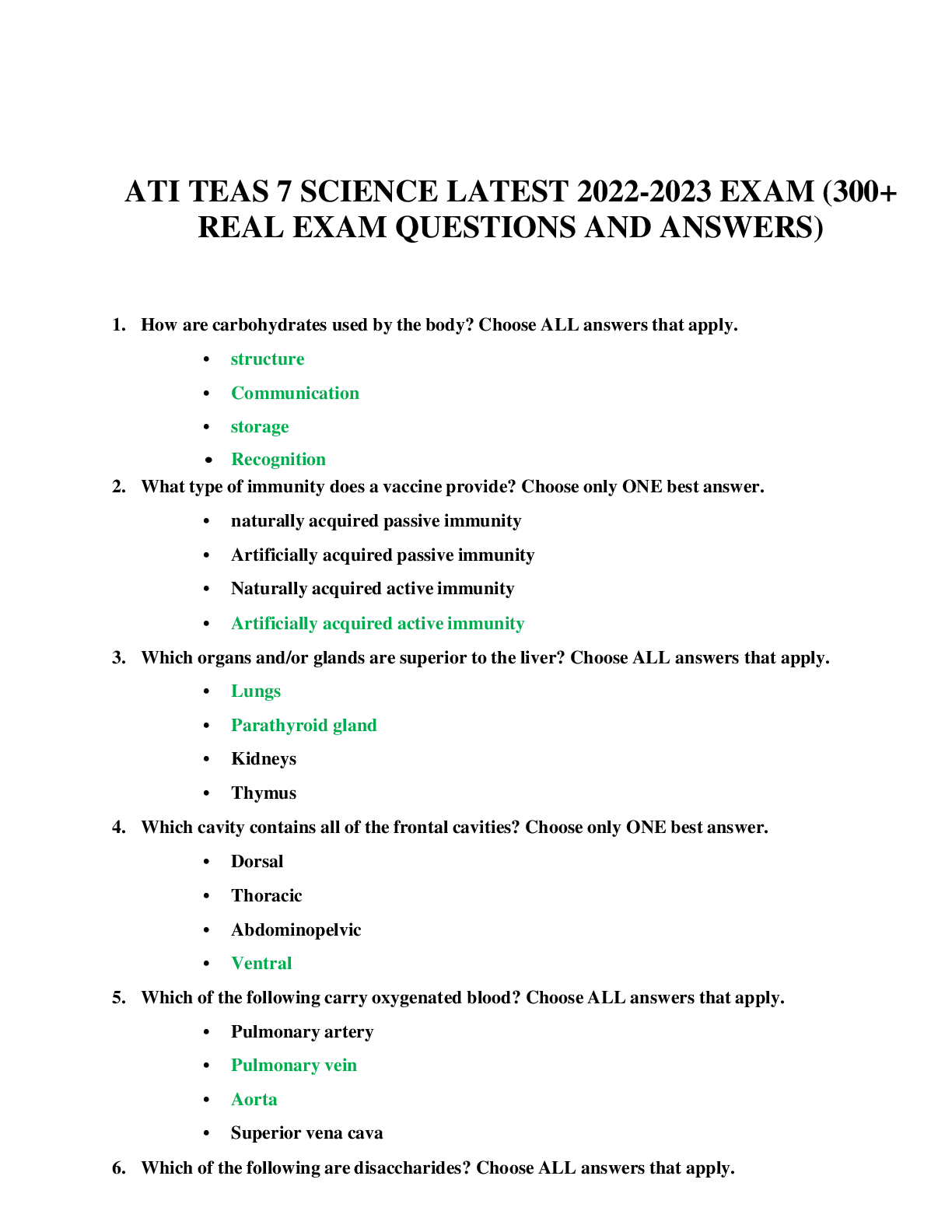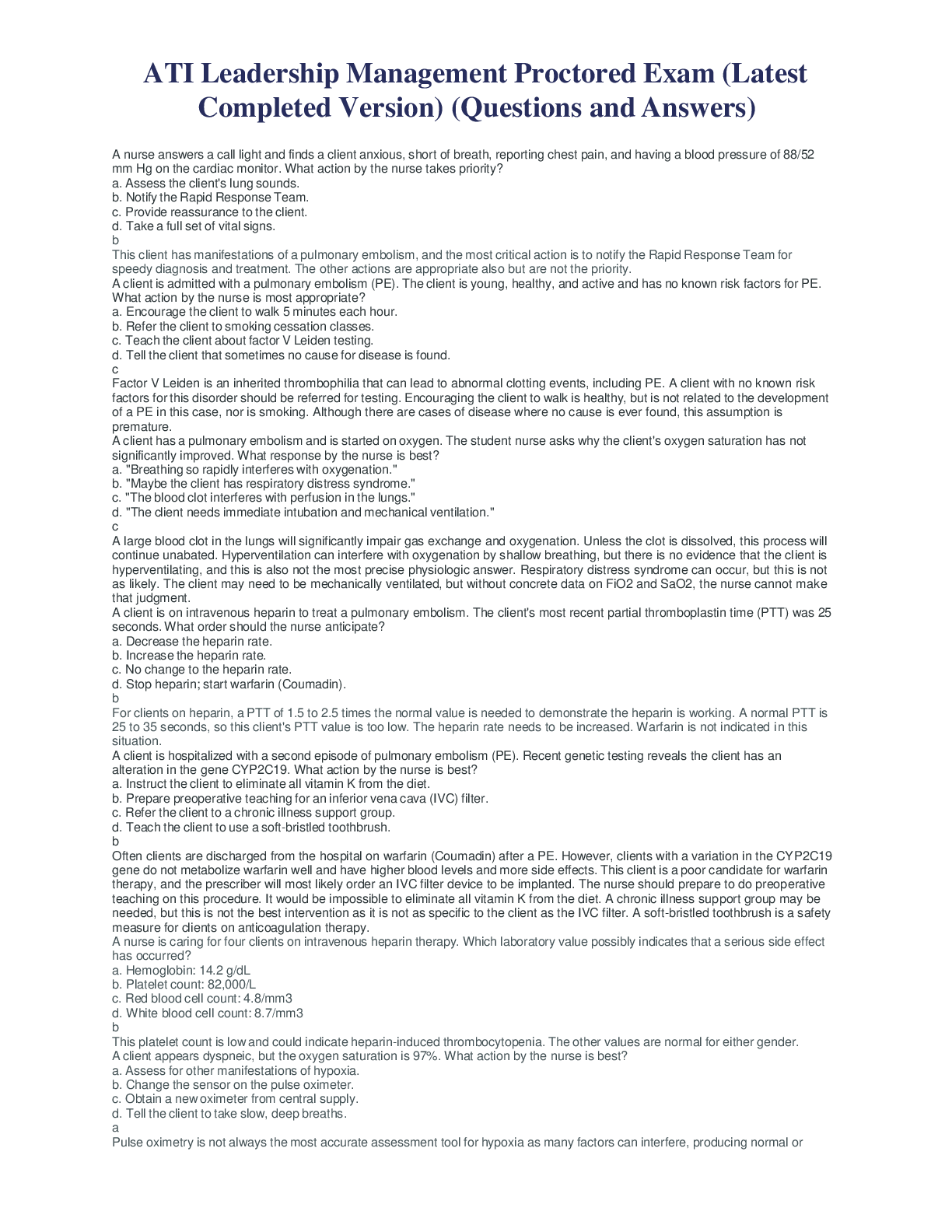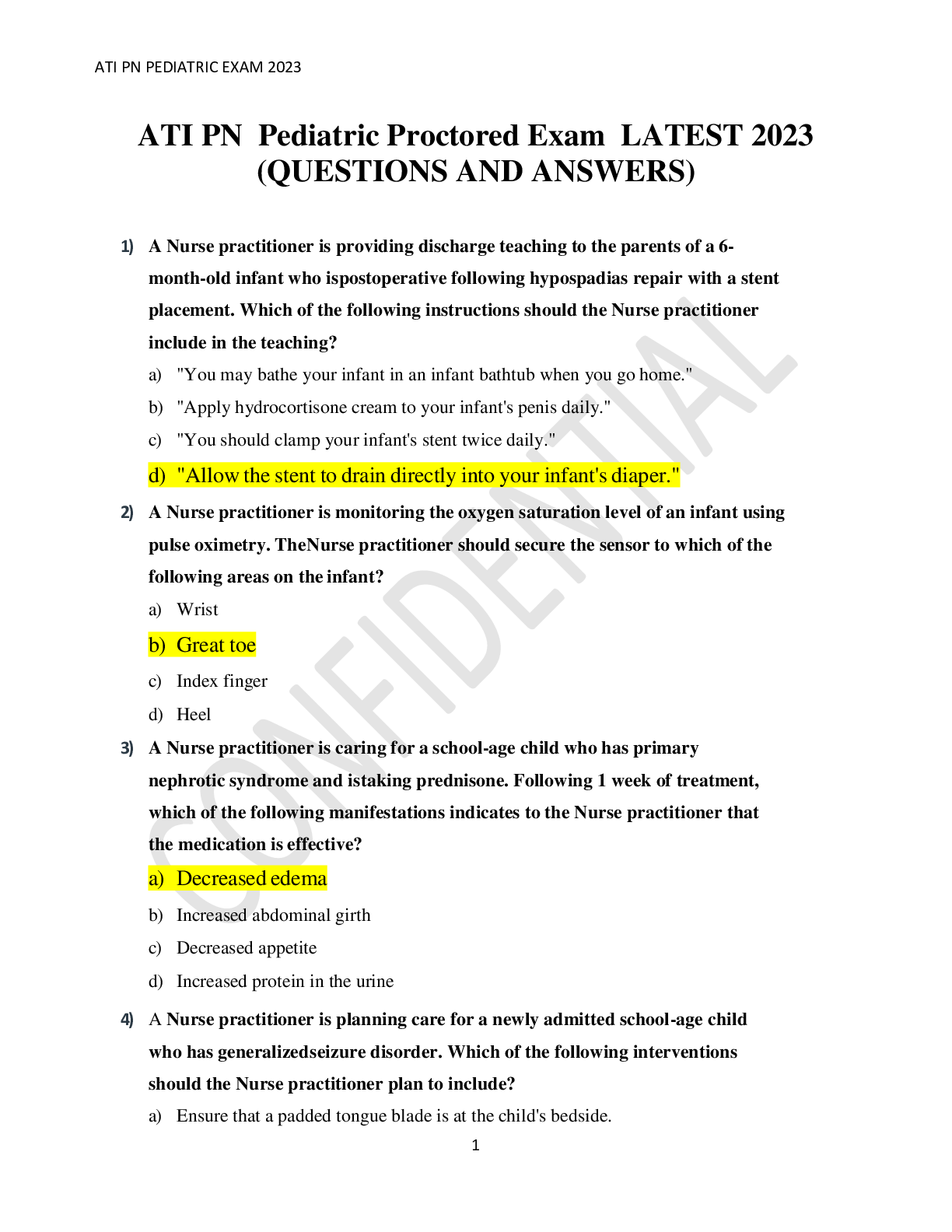*NURSING > ATI > ATI TEAS 7 (PRACTICE QUESTIONS AND ANSWER) ATI TEAS 7 (PRACTICE QUESTIONS AND ANSWERS) (All)
ATI TEAS 7 (PRACTICE QUESTIONS AND ANSWER) ATI TEAS 7 (PRACTICE QUESTIONS AND ANSWERS)
Document Content and Description Below
ATI TEAS 7 PRACTICE QUESTIONS AND ANSWERS. 1) Chemical bonding – a. Uses electrons that are closest to the nucleus of the atoms bonding b. Always uses electrons from only of the atoms involved ... c. Uses all the electrons in all atoms involved d. Uses the valence electrons of all the atoms involved 2) Which of the following would have the most dramatic effect in changing the reaction rate? a. Decreasing the temperature by two-fold b. Increasing the pressure by two-fold c. Decreasing the activation energy by three-fold d. Decreasing the concentration of reactants by two-fold 3) Group one in the periodic table has valence electrons and is reactive than Group two. a. Zero; more b. Zero; less c. One; less d. One; more 4) Enzymes are created from amino acid chains. As such, what might prevent the action of an enzyme? a. A pH close to 7 b. A high temperature c. The lack of hydrogen ions in solution d. A lack of ATP in the cell 5) If a scientists want to determine the rate at which an enzyme works, what could he or she measure? a. The rate at which the enzyme is degraded b. The rate at which the product disappears c. The rate at which the reactants disappear d. The rate at which the products appears 6) The rate of a chemical reaction depends on all of the following except a. Surface area b. Temperature c. Presence of catalysts d. Amount of mass lost 7) Which of the answer choices provided best defines the following statement? For a given mass and constant temperature, an inverse relationship exists between the volume and pressure of a gas? a. Boyle’s Law b. Ideal Gas Law c. Charles’ Law d. Stefan-Boltzmann Law 8) Prokaryotic and eukaryotic cells are similar in having which of the following? a. Integral membrane proteins in the plasma membrane b. Presence of a nucleus c. Membrane-bound organelles d. Protein-studded DNA 9) Blood cells that are responsible for transportation of oxygen are called a. Leukocytes b. Thrombocyte s c. Erythrocytes d. Plasma cells 10) What is another name for the Adam’s Apple? a. Vocal box b. Thyroid cartilage c. Cricoid cartilage d. Hyoid bone 11) When exhaling, the diaphragm a. Relaxes b. Contracts c. Moves down and in d. Stays in the same position 12)Which of the following correctly lists the cellular hierarchy from the simplest to most complex structure? a. Tissue, cell, organ, organ system, organism b. Organism, organ system, organ, tissue, cell c. Organ system, organism, organ, tissue, cell d. Cell, tissue, organ, organ system, organism 13) If a cell is placed in a hypertonic solution, what will happen to the cell? a. It does not affect the cell b. It will swill c. It will stay the same d. It will shrink Hypertonic solution is a solution with a higher particle concentration and lower water content outside the cell. Water moves from the cell to the solution, losing water and shrinking. 14) What is the longest phase of the cell cycle? a. Cytokinesi s b. Interphase c. Metaphase d. Mitosis 15) B = alleles for brown eyes; g = alleles for green eyes B g B Bg Bg g Bg gg What word describes the allele for green eyes? a. Heterozygous b. Dominan t c. Recessive d. Homozygous i. Recessive alleles are represented by lower case letters 16) What is the possibility that the offspring produces will have brown eyes? a. 100% b. 25% c. 75% d. 50% 17) What are groups of cells that perform the same function? a. Molecules b. Organs c. Plastid s d. Tissues 18) When does the nuclear division of somatic cells take place during cellular respiration? a. Mitosis b. Interphase c. Meiosis d. Cytokinesis i. Nuclear division of somatic cells takes place during mitosis 19) Which group of major parts and organs make up the immune system? a. Lymphatic system, spleen, tonsils, thymus, and bone marrow b. Nose, trachea, bronchial tubes, lungs, alveolus, and diaphragm c. Brain, spinal cord, and nerve cells d. Heart, veins, arteries, and capillaries 20) What is the role of ribosomes? a. Waste removal b. Make proteins c. Storage d. Transport 21) Which of the following is an example of a tissue? a. Mamma l b. Xylem c. Liver d. Hamstring 22) The adrenal glands are part of the a. Emphatic system b. Respiratory system c. Endocrine system d. Immune system [Show More]
Last updated: 1 year ago
Preview 1 out of 53 pages

Reviews( 0 )
Document information
Connected school, study & course
About the document
Uploaded On
Mar 01, 2023
Number of pages
53
Written in
Additional information
This document has been written for:
Uploaded
Mar 01, 2023
Downloads
0
Views
226




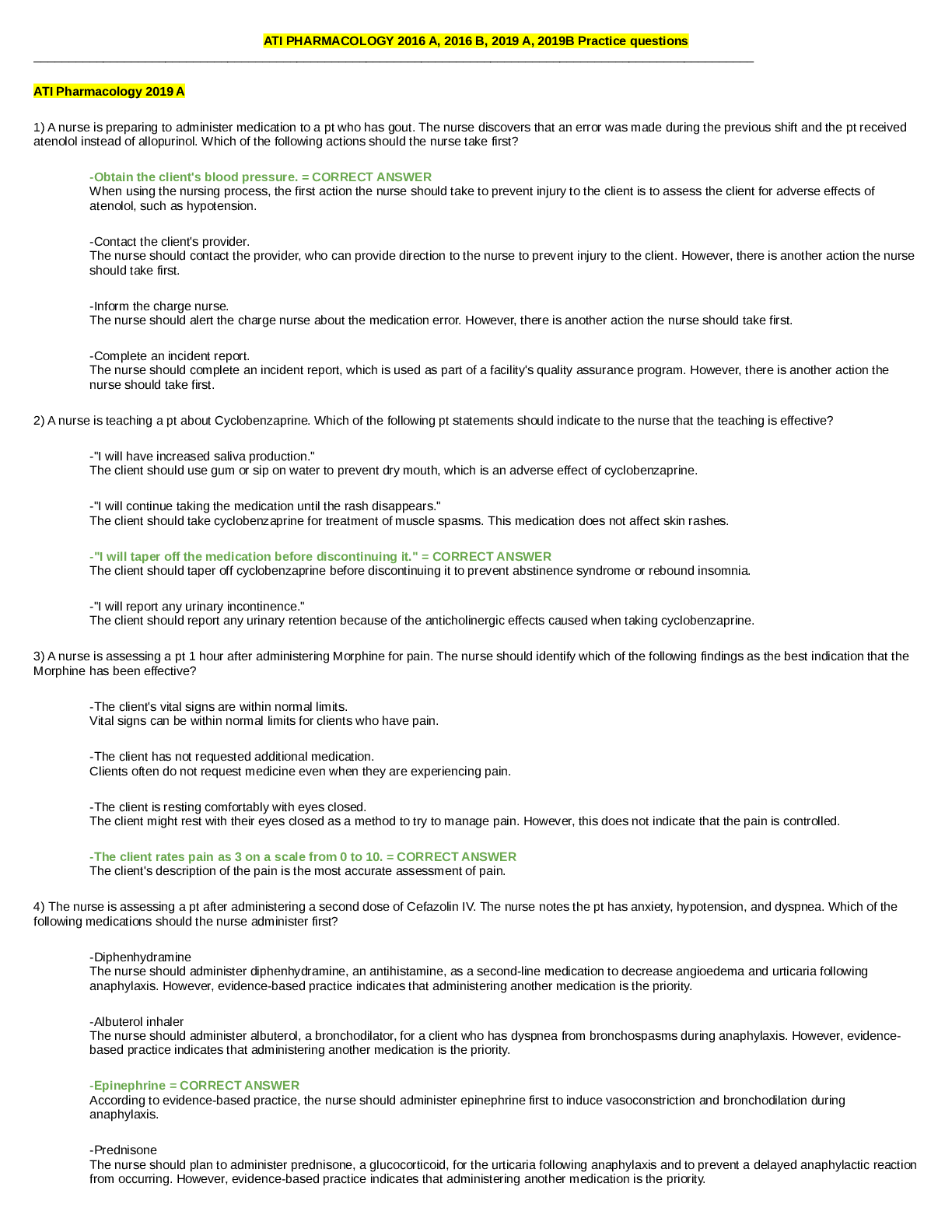


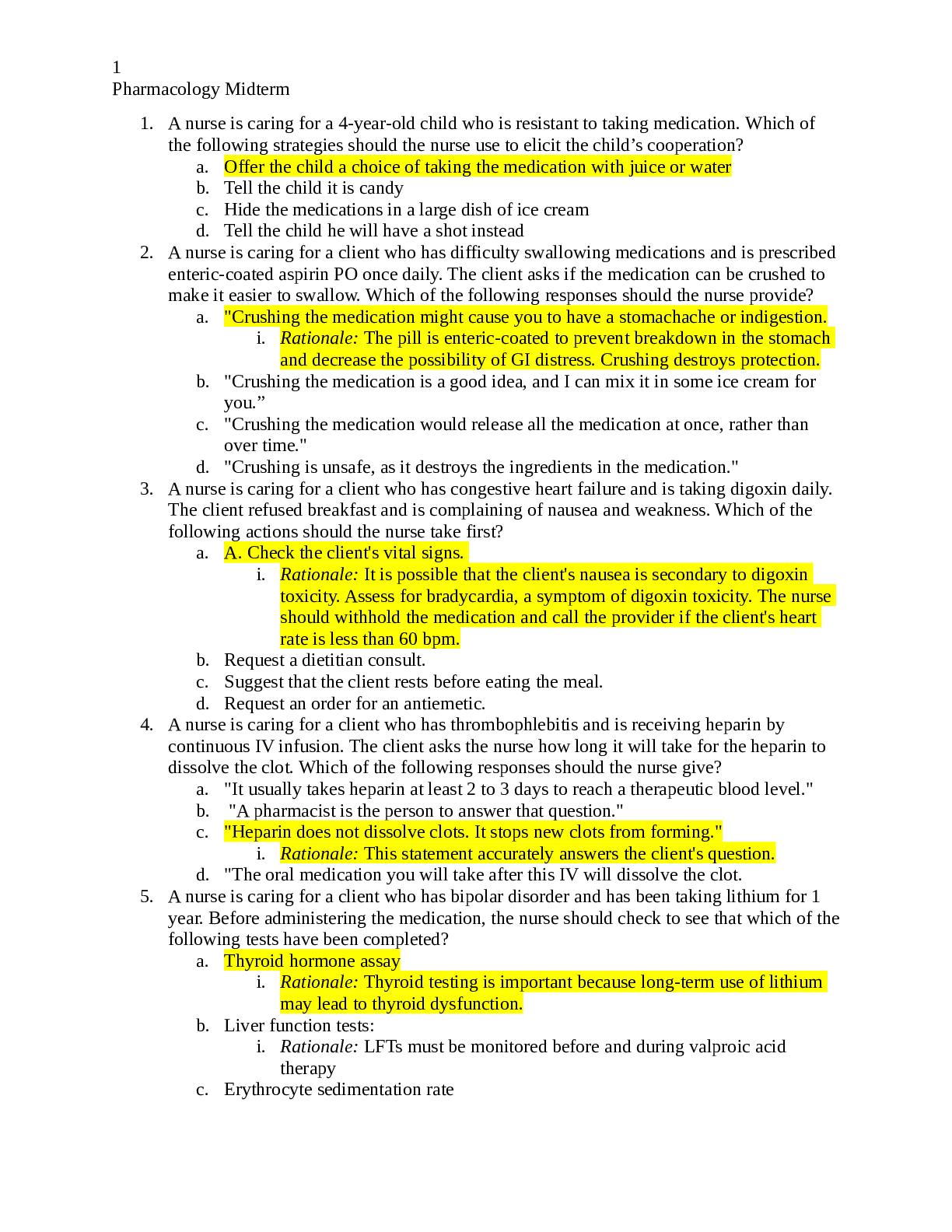

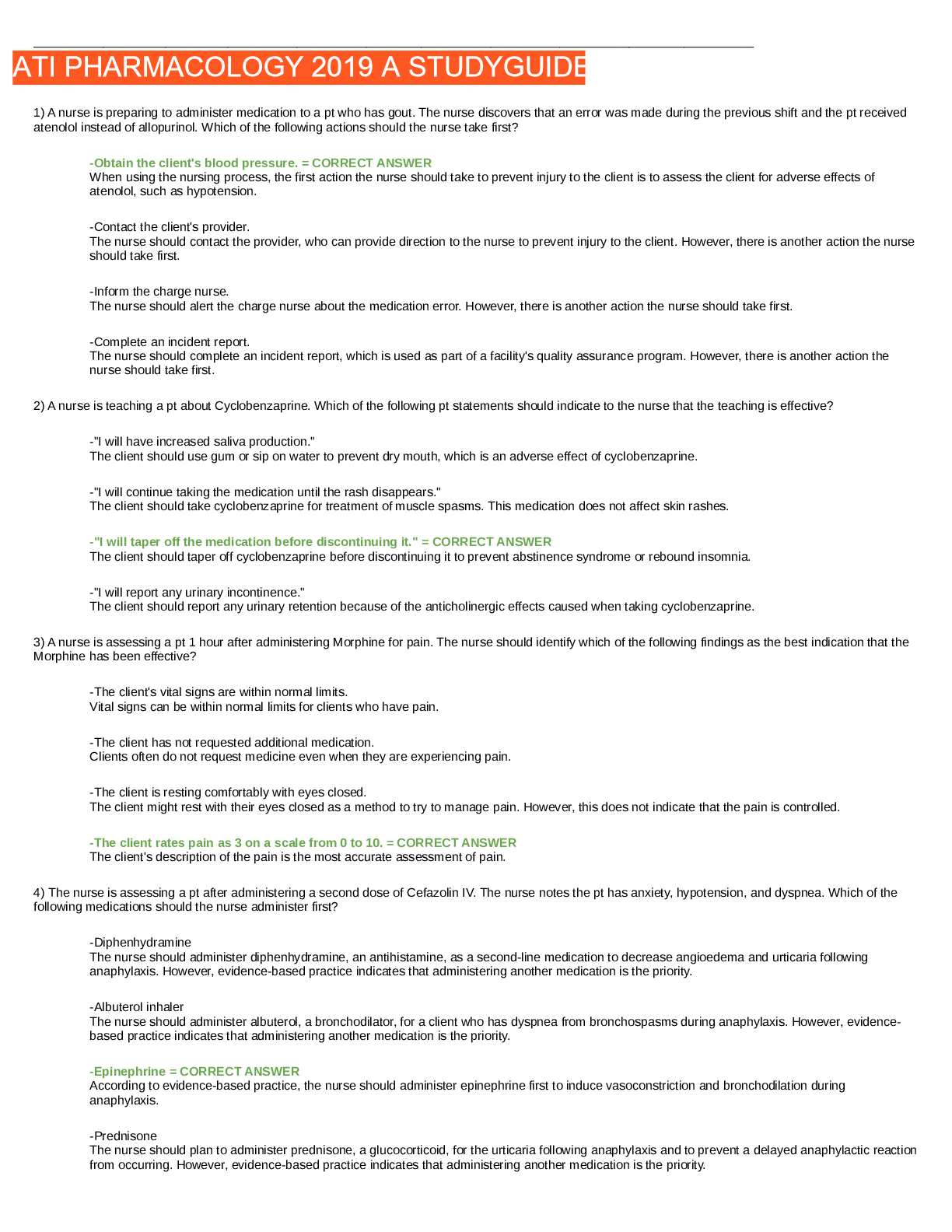
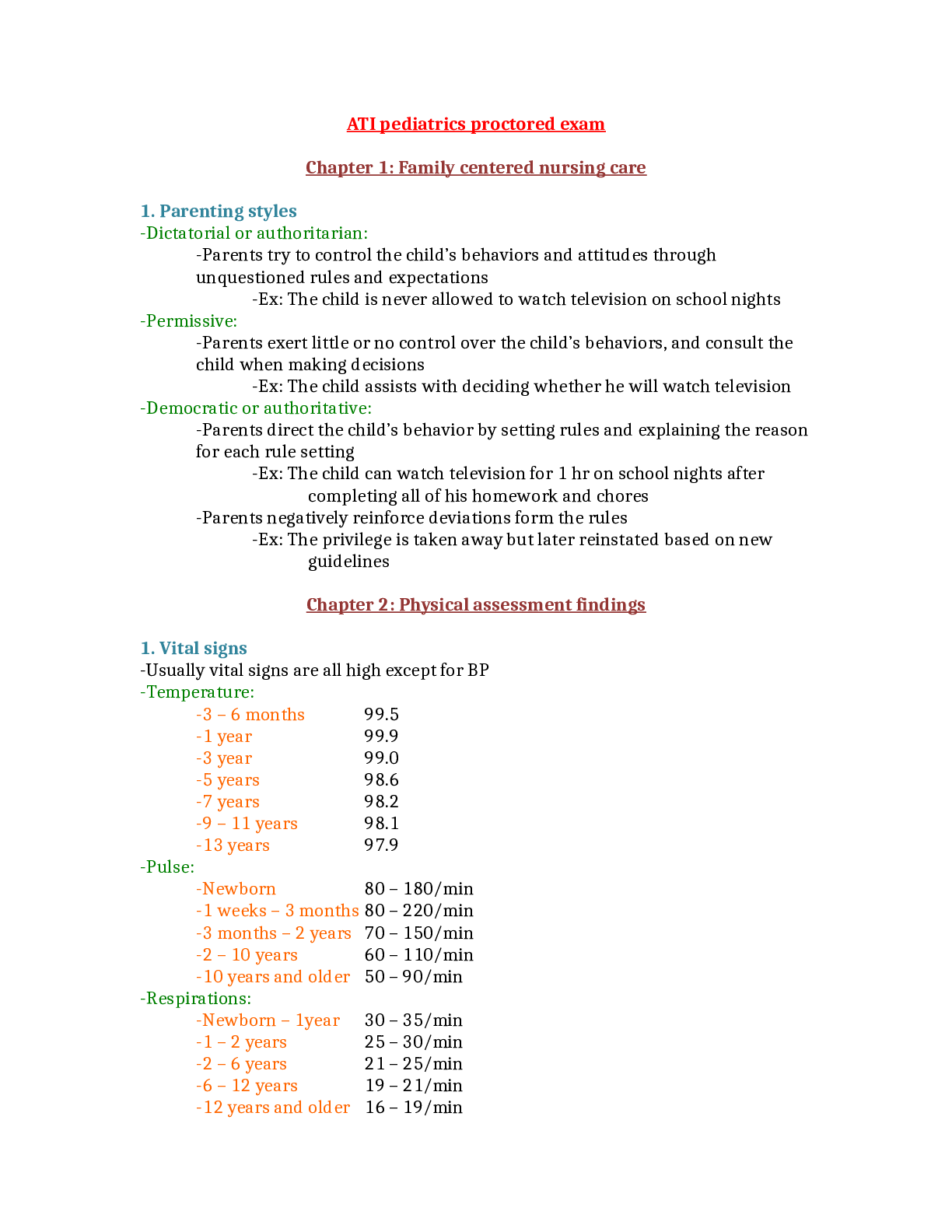
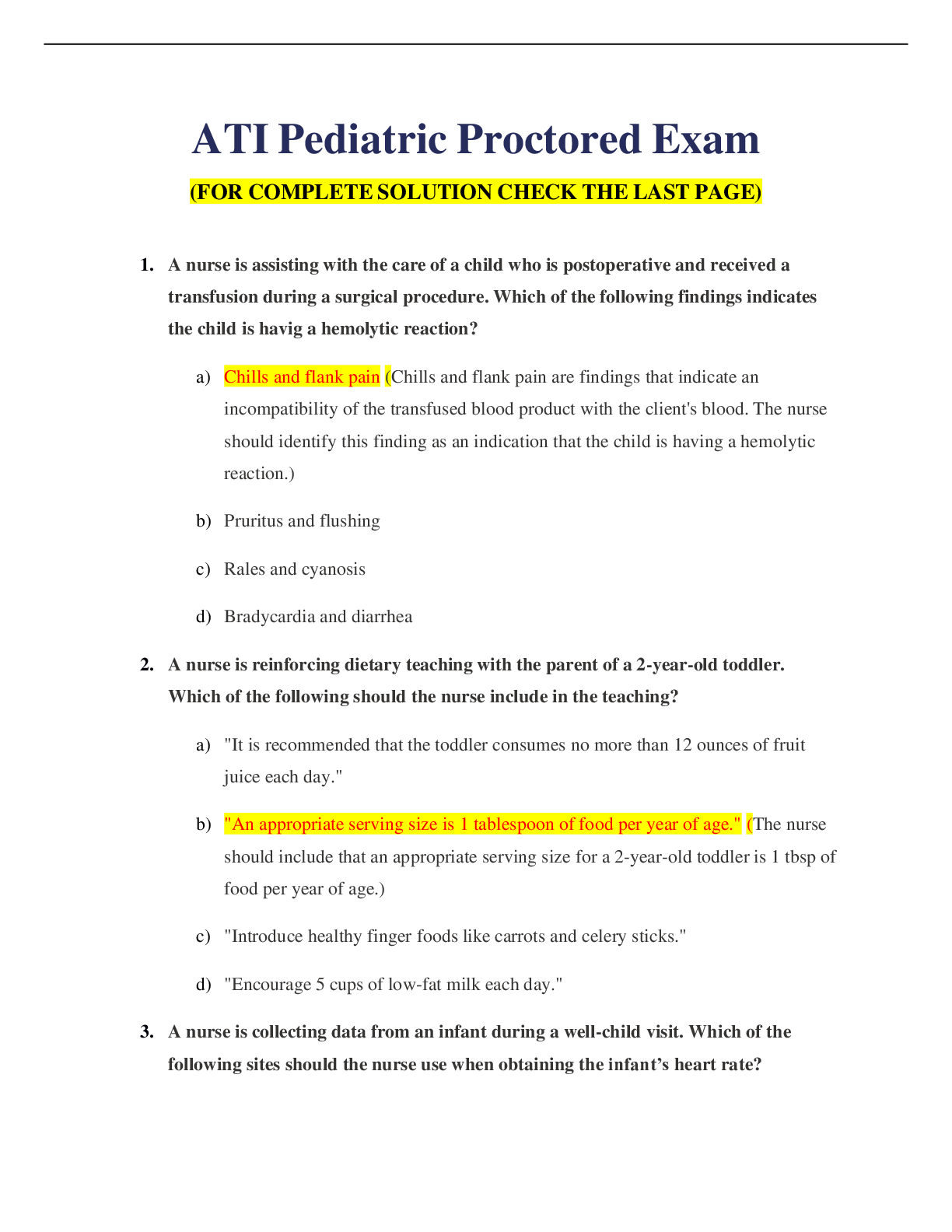

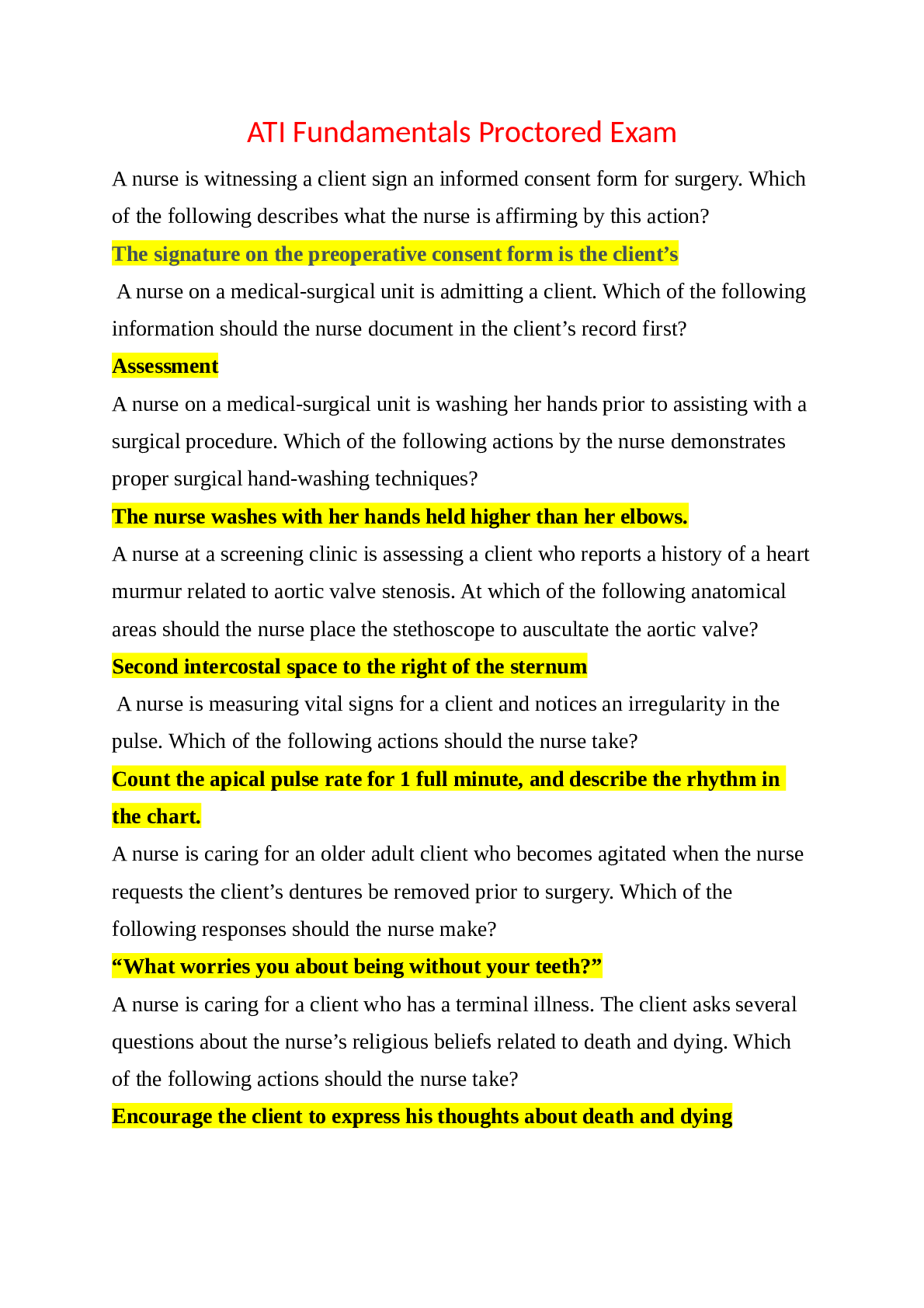


.png)



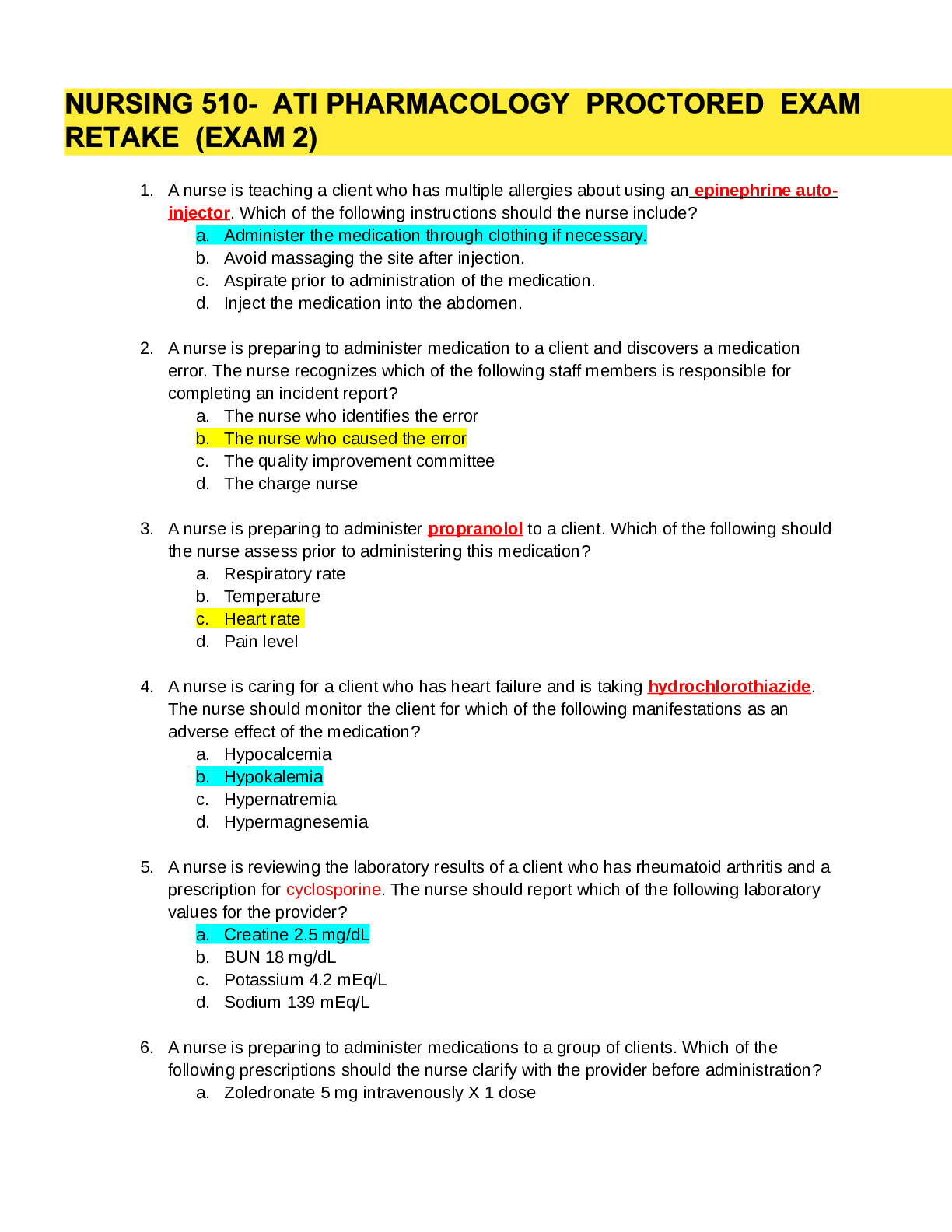

.png)
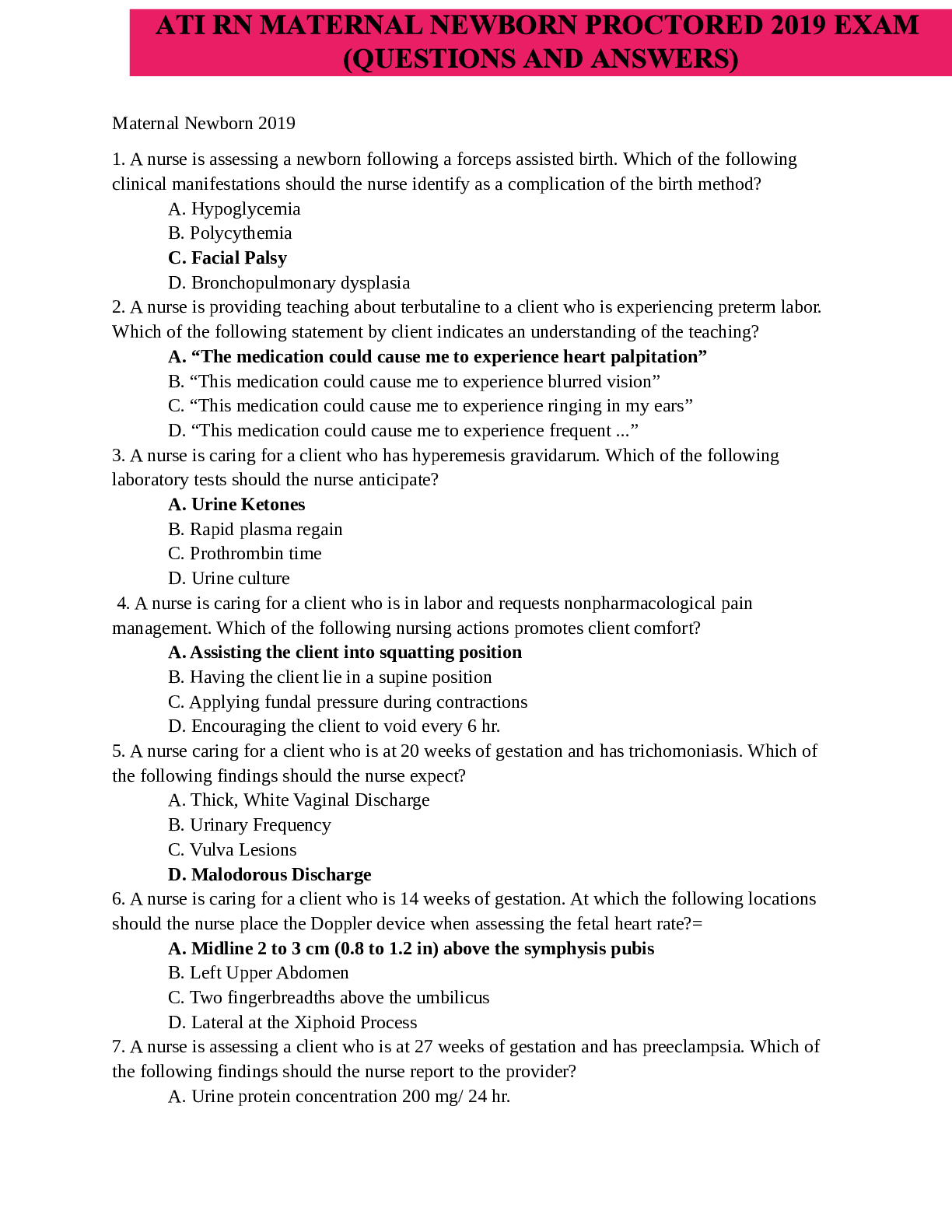

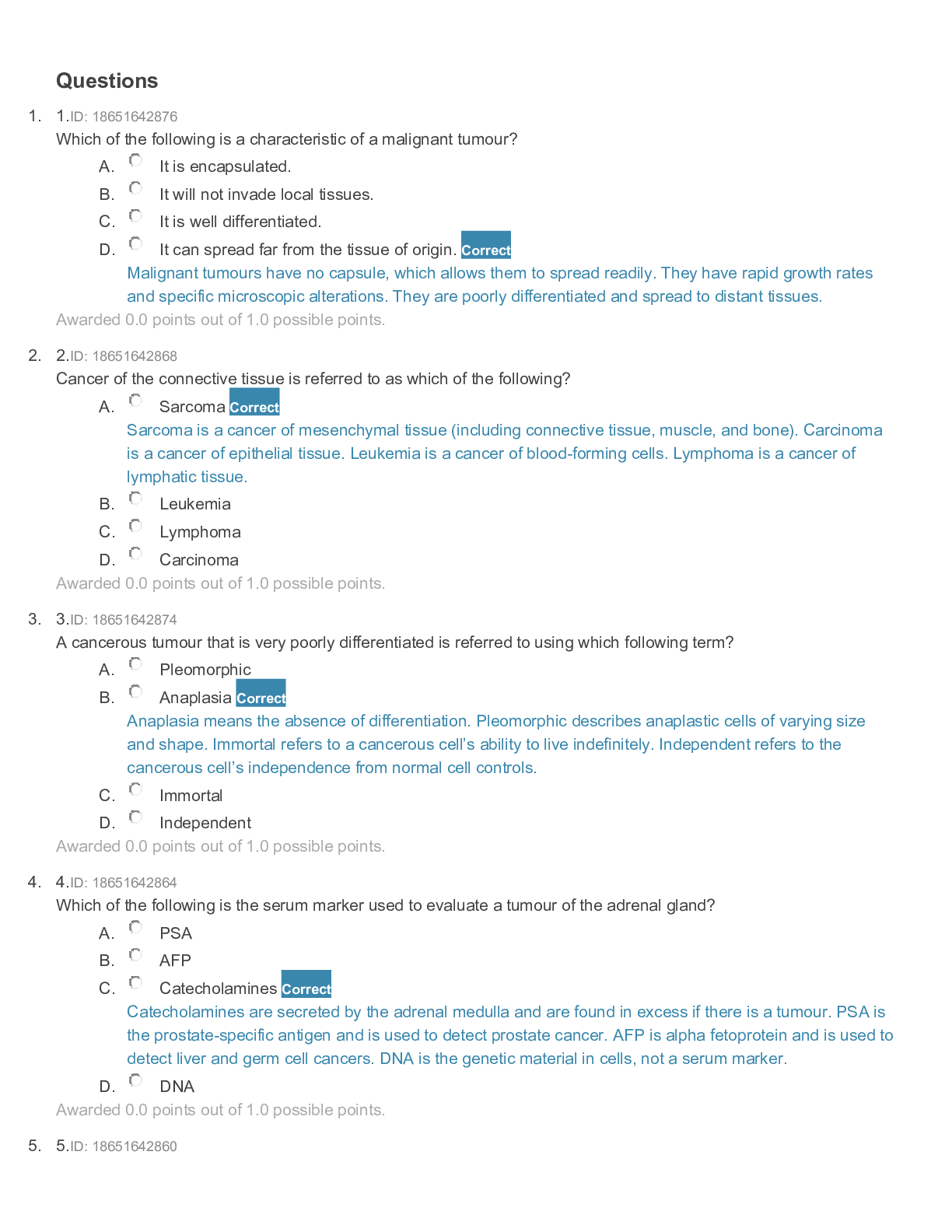

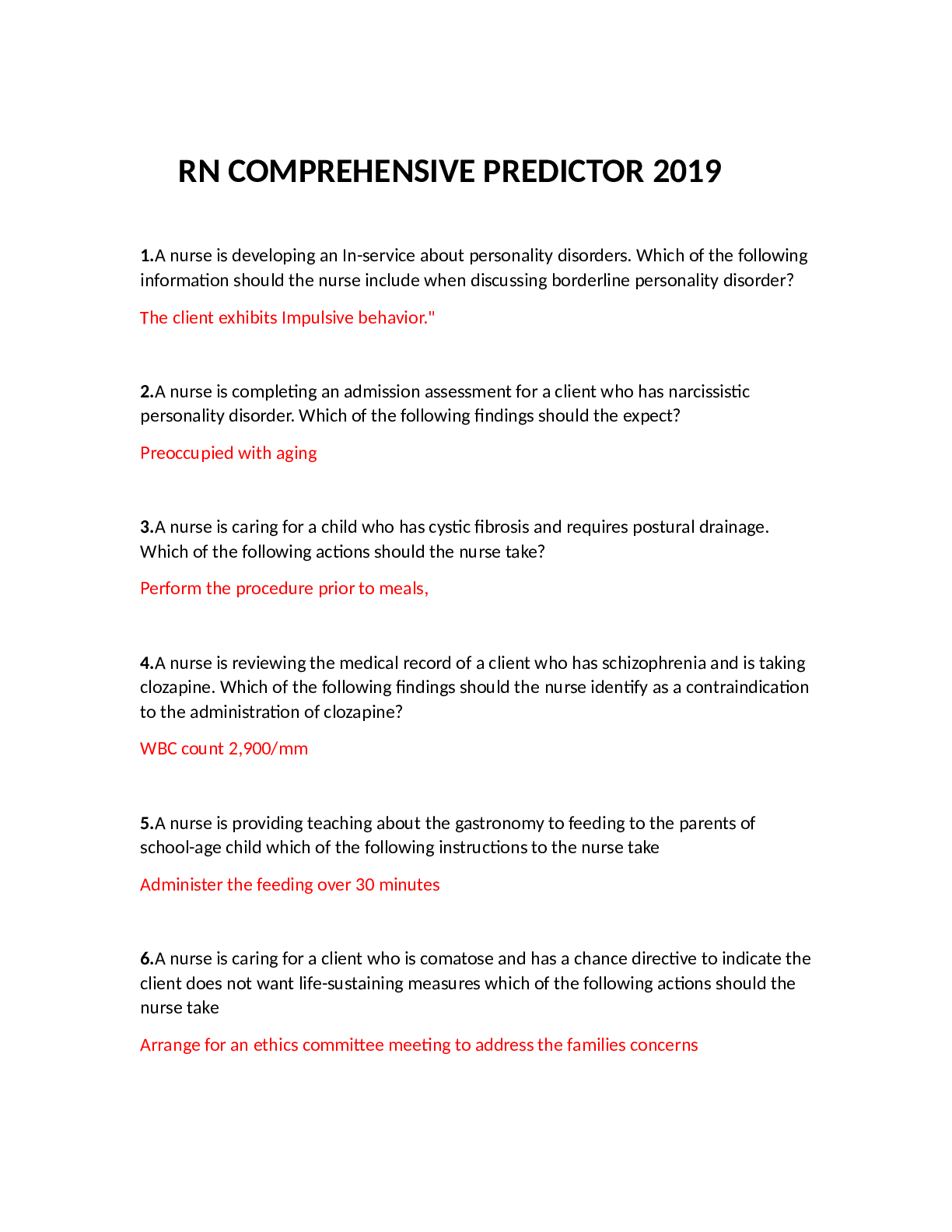
.png)
